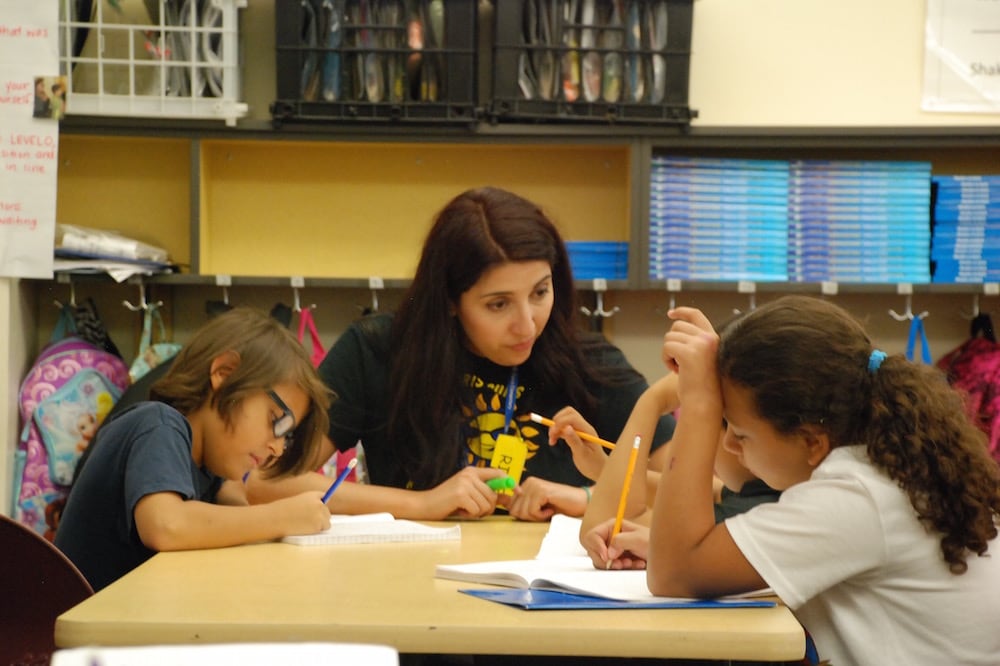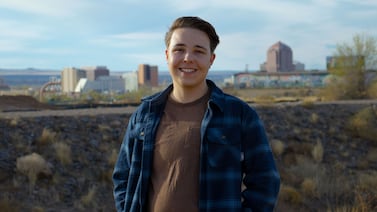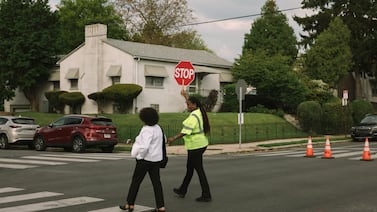With students leaving one side of Aurora and new students showing up on the opposite end of the city, the Aurora school district needed a new plan to rearrange classroom space. It started collecting public opinion and crafting a long-term plan five years ago.
Yet now many parents are upset, and school board members are split over the next key step — to close two elementary schools.
At a chaotic board meeting that stretched almost until midnight last month, board members grilled the administration about its plans, proposed closing different schools, and called it unfair that they may be asked to provide alternative guidance if they rejected the superintendent’s proposal. In the end, they delayed a vote and decided to take up the closure proposal later this month.
There’s no painless way to close a school, experts and educators say, no matter how much work and time a district puts in.
The goal, researchers say, is to allow communities to feel empowered in crafting solutions, and to feel their voice was heard. Although Aurora tried to do that, some parents feel they weren’t consulted early enough, nor informed about potential school closures.
In reorganizing campuses, Aurora officials said they can’t keep all schools open and still provide broad and high-quality academics and enriching programs everywhere.
“Small schools are a legitimate approach but you have to design the entire system then to support that,” Superintendent Rico Munn said. “It’s a dramatic philosophical switch.”
Right now, running small schools prevents the district from investing in other programming.
“If we keep investing in half-empty buildings, we’re not investing in resources and people,” Munn said.
But the school board, which includes three members who joined in November, well after the district drafted the facilities plan known as Blueprint APS, may not agree.
Many metro area districts are losing enrollment and anticipate closing small schools. In Jeffco, which closed one school last year and may close another without any long-term closure process, board members suggested looking at schools as a part of their neighborhoods, as Aurora did, rather than just closing any school that hits low enrollment. Denver is also considering a regional approach.
But Aurora’s experience shows that long-range planning doesn’t necessarily make the process easier.
Aurora is losing the most enrollment in the low-income west near Denver, and gaining it in new middle-income subdivisions near the plains.
This school year, an advisory committee and Munn recommended closing two small northwest elementary schools, Sable and Paris, at the end of next school year. Last year the district also closed several other schools, and the administration is likely to recommend more closures in coming years.
As often happens elsewhere, the school closures in Aurora hit a low-income immigrant community the hardest.
“It’s a blunt instrument and unfortunately those communities aren’t left with good choices,” said Sally Nuamah of Northwestern University. “They know when those schools are taken they won’t be provided with other strong public resources so they feel they have to protect the public resources they have.”
When a district seeks public input before closing schools, it should make the community feel empowered, she said. That means involving people before proposing a solution, said Nuamah, an assistant professor of human development and social policy.
Munn said Aurora sought to do that through focus groups, surveys, regional design groups, and more over the past several years.
“We really were trying to be thoughtful. We tried to really let the community tell us its vision for that future and now we’re at what is the difficult part,” Munn said. “I think where people get caught off guard is when it becomes real.”
Aurora may have downplayed the implications of the plan. Early on, the district focused on soliciting community desires for its schools, and mentioned repurposing campuses rather than closing them.
Just before winter break, Sable parents learned their school might close. They said they don’t understand why it was chosen.
“I feel they haven’t been honest,” said parent Brenda Pineda, who said she didn’t hear about Blueprint until this year. “I wish they would have explained everything from the beginning instead of hearing different reasons at each meeting. It leads us to think there has to be something else going on.”
Pineda, a mother of a third grader at Sable, said the district said that it’s about enrollment, but she hasn’t noticed fewer children at her school. Then she heard it was about how that affected the budget, but she’s heard that schools got an influx of money for pandemic relief. Now she’s heard that the building location is attractive for other uses.
Sable with 370 students and Paris with 250 aren’t the two smallest schools in their area, where each school had enrollment declines from 26% to 45%.
Munn said that because low enrollment affects most district schools, it doesn’t itself trigger a closure. Instead, Munn’s approach considers neighborhood regions as a whole and also looks at building conditions, capacity of nearby schools, and whether the campus could be used for other purposes, among other factors.
On March 22, the board could choose to keep Sable and Paris open. If it does, Munn asked members to be prepared to give him guidance on alternatives such as new rules for picking schools to close or asking him to maintain small schools.
“We would need clarity around what that direction is because the problems are still there. They still exist,” Munn said.
Apart from being a facilities plan to close schools in underenrolled neighborhoods, and to plan for new schools in new developments, Blueprint was also designed to incorporate educational changes.
The district is opening magnet schools with different themes in each of its seven regions, including an arts magnet opening in the fall, and remodeling to create more K-8 programs.
Munn says he has prioritized equity. He told the board the investments amount to about $90 million for schools on the east side and $87 million for those on the west side.
The long term-plans will serve Aurora well as demographics continue to shift, said Parker Baxter, of the University of Colorado Denver.
“This is where I give Aurora credit for intentionally addressing this over a long-term process because it is going to be difficult,” said Baxter, director of the university’s Center for Education Policy Analysis. He has evaluated the community engagement element of the district’s Blueprint plan.
But big-picture equity doesn’t necessarily translate to satisfaction among families who might lose a neighborhood school.
Lucero Gonzalez doesn’t want her third-grade daughter, Valentina, 9, to face more years of change.
“She wants us to save her school and I want her to feel our love and support in her heart so she knows we tried everything we could,” Gonzalez said.
If the board approves the district’s plans to close Sable, Valentina and her third grade classmates would finish the fourth grade there, but transfer to a new school for fifth grade, and then to another for middle school.
That’s after the pandemic has already interrupted their elementary learning since first grade.
“That’s a lot of change for kids,” Gonzalez said.
For Gonzalez herself, Sable has become family. Through a program she learned some English, and now she is working on her GED.
She has made friends with other immigrant mothers who, like her, have no family here and depend on other moms for social interaction. With different native languages, they communicate in the English they learned at Sable.
The district’s Long Range Facilities Advisory Committee initially considered closing Park Lane Elementary, but then recommended closing Sable and looking at other uses for the space because of its large parking lot and location. They also worried that if Park Lane closed, Sable could not accommodate the displaced students.
That late shift in plans meant that parents from Sable didn’t find out about a possible closure of their school until after the committee issued its recommendations. On the district’s earlier notice, Sable wasn’t on the initial list of possible closures. Now families doubt that their community will benefit from the proceeds or from the new use of the building.
Gonzalez fears that if her school closes, the community of moms will be split up. Many don’t have cars and can’t walk to a school elsewhere.
“Friends are the family we choose,” Gonzalez said. “It’s very sad to think we won’t see the people we share our lives with again.”
Yesenia Robles is a reporter for Chalkbeat Colorado covering K-12 school districts and multilingual education. Contact Yesenia at yrobles@chalkbeat.org.






